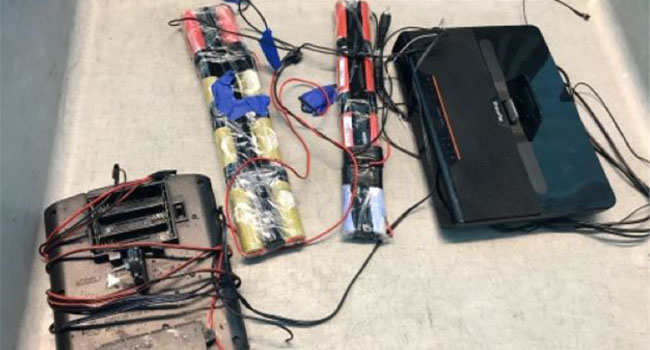
TSA team at JFK International Airport Kept Suspicious Item off a Flight
Transportation Security Administration (TSA) officers at John F. Kennedy International Airport identified an unusual suspicious item inside a traveler’s carry-on bag that could have resulted in a tragic outcome had the item been carried onto an aircraft. The bag was pulled for a search and determined to be two large electronics wired to what appeared to be a tampered power source.
A TSA explosives expert was called to examine the item. It was deemed that the power component was hazardous because the passenger had tampered with and exposed multiple lithium batteries, which created a possible explosive device.
Officials tracked down the passenger who explained that he had constructed a solar panel wired to the batteries to power his device because of the difficulties in finding batteries in the country he was ticketed to travel to. He was not permitted to travel with the batteries as he had altered them and he agreed to voluntarily abandon the altered batteries with TSA for proper safe disposal.
“This type of incident demonstrates the skill of our TSA officers in identifying possible dangerous items that could potentially cause a catastrophic event,” said John Essig, TSA’s Deputy Federal Security Director for the airport. “We saw critical thinking on the part of two TSA officers in knowing that the components of the device they detected could have resulted in a tragic outcome and contacting one of our explosives experts to confirm their suspicions. This was a good catch and goes to the point that our workforce is skilled at identifying prohibited items and items that should not be carried onto aircrafts.”